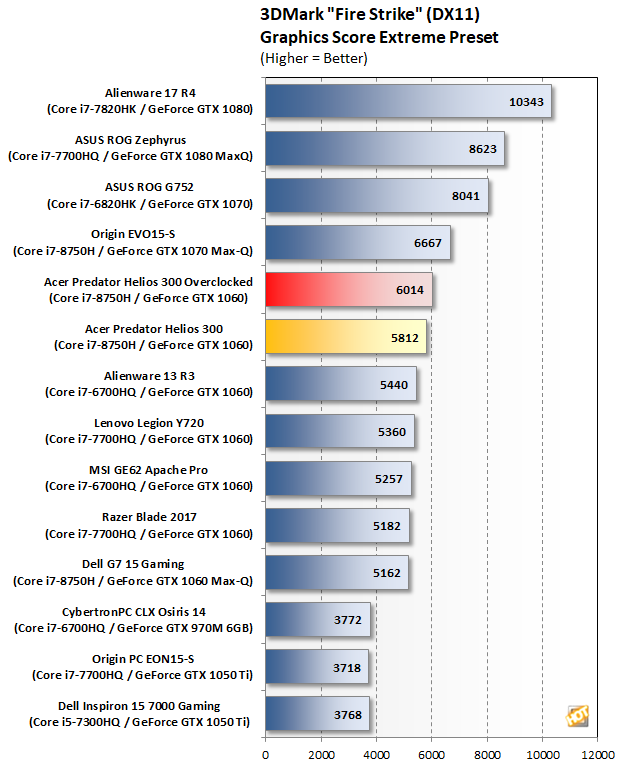UL Benchmark’s well-known PCMark and 3DMark benchmark suites features tests that target a wide array of computing devices. In this case, Acer's Predator Helios 300 is armed with discrete graphics, a GeForce GTX 1060 based on NVIDIA's Pascal architecture.
 |
PCMark 8 Benchmarks
|
Productivity And System-Level Benchmarking
|
|
We run PCMark 8 with OpenCL acceleration enabled so it leverages available CPU and GPU resources. The Home and Work benchmark scores are inaccurate with the desktop resolution at 4K, so we manually set the resolution to 1080p before running the tests on every machine to level the playing field and minimize variability.
PCMark 8 is an older version of UL Benchmark's productivity benchmark (since replaced by PCMark 10), but that also means we have been able to amass a whole bunch of scores from other gaming laptops to compare with the Predator Helios 300. In all three tests, it came out ahead of the Dell's G7 15 Gaming. It also posted the best Work Accelerated score of the bunch.
Here again the Predator Helios 300 topped its rival from Dell, while nipping at the heels of Origin's EVO15-S with a burlier GPU. This is another benchmark where we do not have a large number of gaming systems to compare against, but do have a large collection of laptops in general. Sorted by overall score, the Predator Helios 300 takes second place.
 |
3DMark Fire Strike Extreme And Sky Diver
|
Synthetic DirectX Gaming And Graphics Testing
|
|
3DMark was designed to bring desktop GPUs to its knees. However, since gaming notebooks pack desktop-grade graphics, notebooks can handle the toughest of 3DMark tests.
As we head into the benchmarks that matter for gaming, the Helios Predator 300 shows some moxie. In both the Fire Strike Extreme and Sky Diver tests, it topped every other gaming laptop with a GeForce GTX 1060 inside. This is a solid showing, and it's even better when flipping the overclocking switch to Turbo, as indicated by the red bars in our graphs.
We also ran the Time Spy test to gauge DirectX 12 performance, and as with the other 3DMark tests, the Predator Helios 300 jumped ahead of every other system rocking the same GPU. The performance gap was even wider in this test, with the Predator Helios 300 taking an impressive lead over Dell's laptop.











